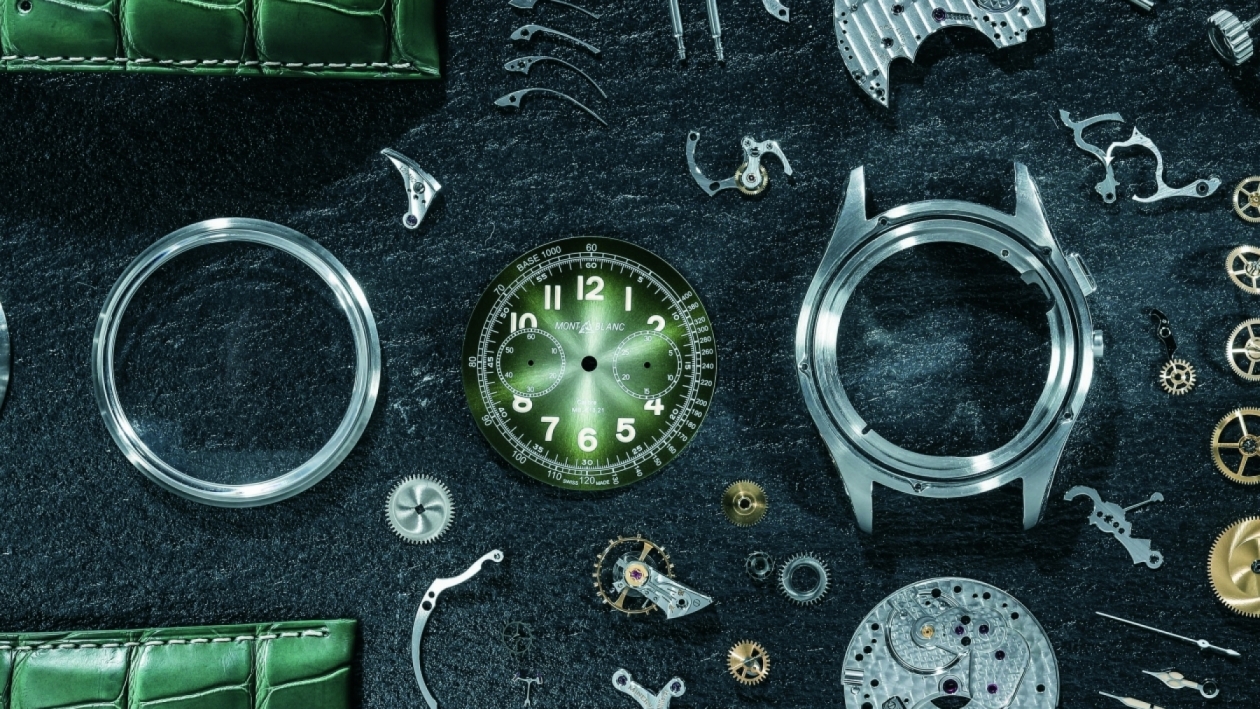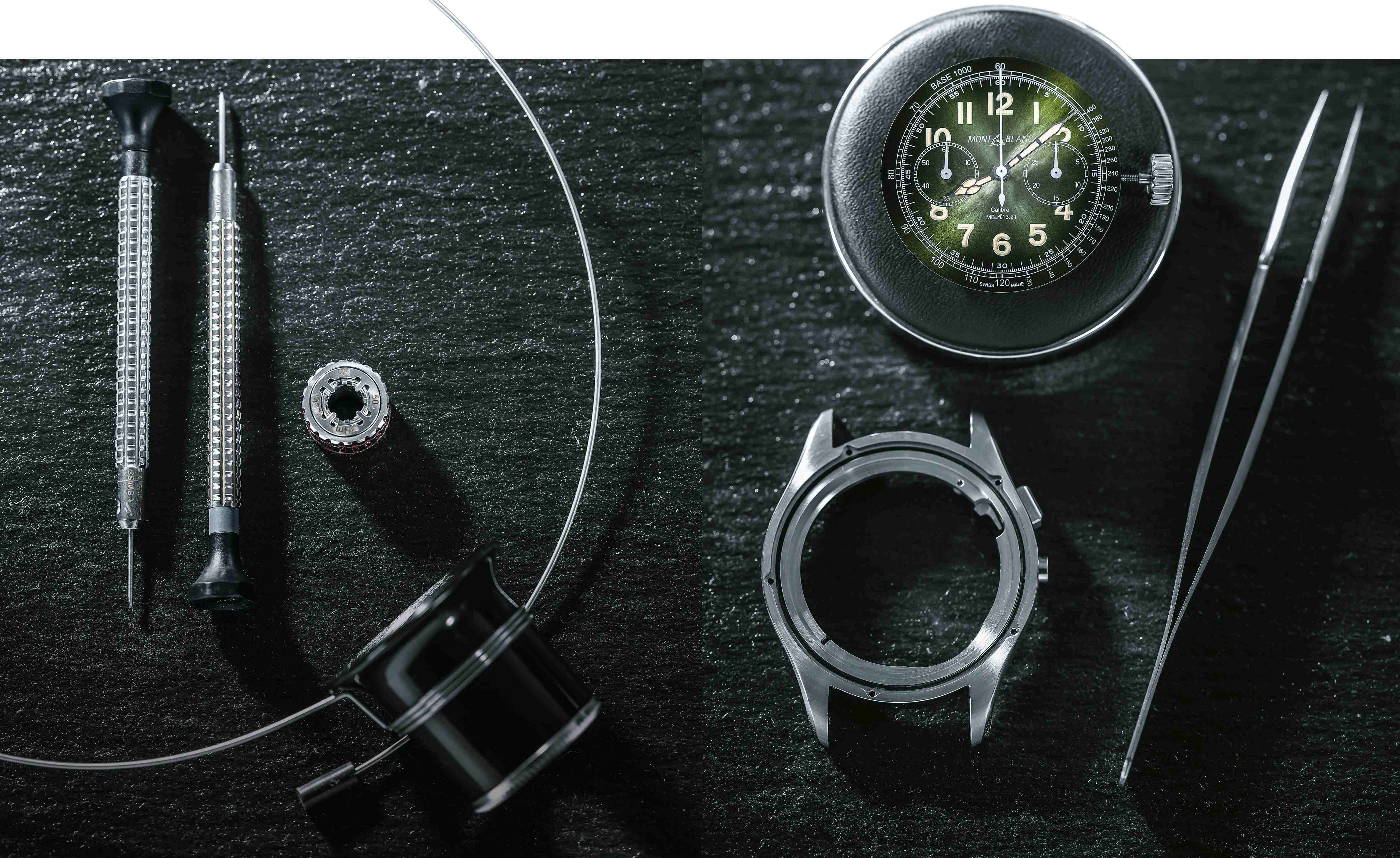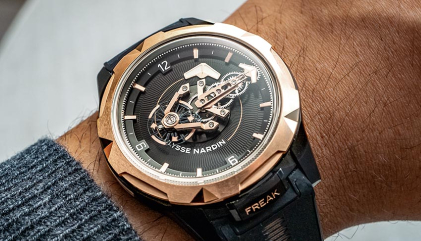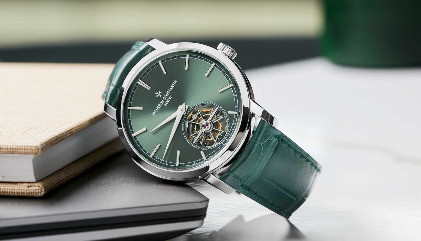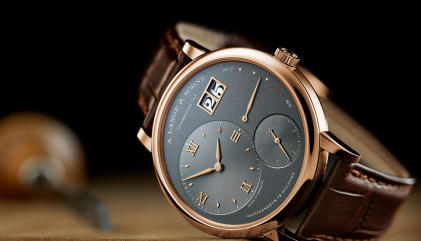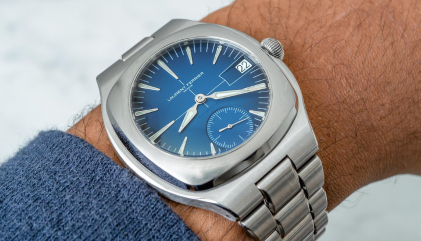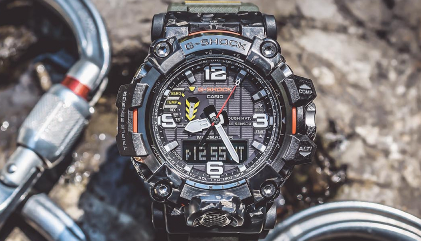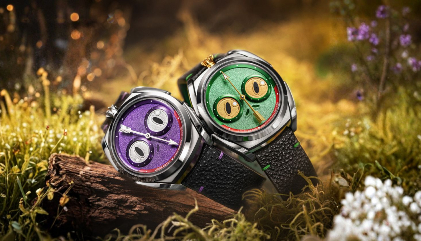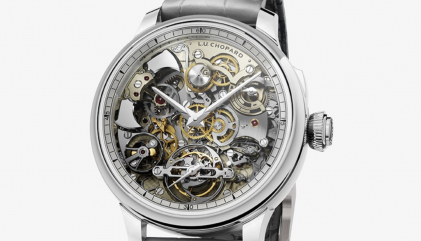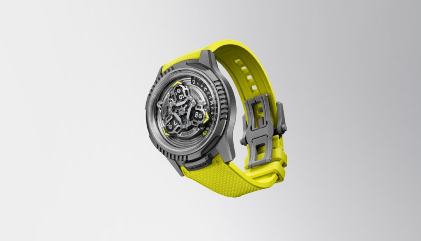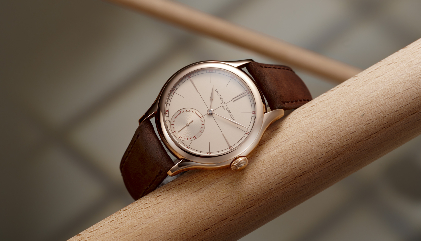The Swiss watch manufacturer Minerva presented its wristwatch chronograph movement 13-20 in 1920, as one of the first of its kind. A 100 years later, the calibre has re-emerged, virtually unchanged as the MB M13.21, in our test watch, the Montblanc 1858 Monopusher Chronograph. Our test shows that every component has been newly manufactured with state-of-the-art materials, but with the same structure as a century ago. Even in the extremely traditional world of watchmaking, this is unique.
But how did this movement end up in a Montblanc watch? In 2006, parent company Richemont purchased the illustrious but wavering watch brand Minerva and merged it with Montblanc, including the manufacture in Villeret, located in the Jura region of Switzerland, where Minerva has been making watches since it was founded, along with its archive, machinery and a few employees. Today, the movement remains a true in-house calibre and is produced in the same building as it was 100 years ago.
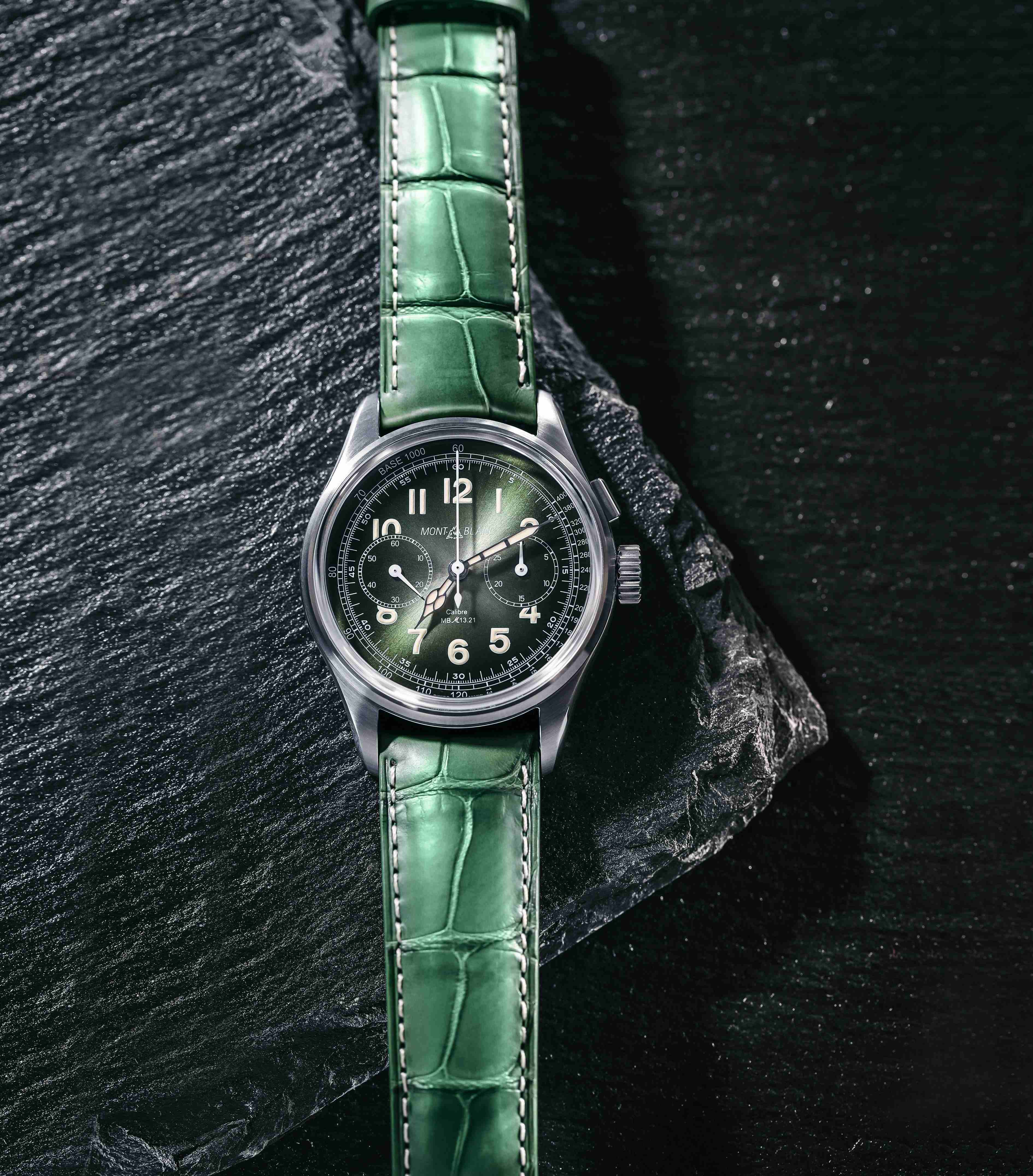
First, we examined the watch prior to complete the disassembly. Montblanc styled the hands and dial in accordance with its 1858 collection and in honour of the traditional movement, even down to the meticulously finished curved and polished hands, which include compartments that were previously necessary to hold enough liquid luminous material in place before it hardened. The sans serif Arabic hour numerals are also coated with luminous material and are clearly legible. To make the numerals appear more three-dimensional, a white numeral is printed first before applying the luminous material, which gives each numeral an aura-like outline. The outer tachymeter track and historical Montblanc logo underscore the retro look. The design is enhanced by a beautiful green dial that changes colour depending on how its sunburst finish catches the light. The alligator leather strap matches the dial well despite a slight difference in colour. The rich scale pattern of the semi-matte strap, contrasting beige stitching and alligator leather inner lining add to the overall feeling of luxury. The strap is produced in the Montblanc Pelletteria in Florence where Montblanc leather bags and accessories are made. The buckle is also nicely finished with a solid milled pin.
Also Read | Getting into the Boheme Spirit with Montblanc
Work for the Crown
The large crown with a raised, milled Montblanc star is easy to turn, as it should be, since a hand-wound watch often has to be supplied with energy that comes from turning the crown. Thanks to its 55-hour power reserve, winding the watch every other day is sufficient. Pulling the crown out to set the hands is not so easy, however, and there is no modern hack mechanism to stop the balance wheel for precise setting of the time. The pusher’s shape does not perfectly match the watch’s retro design, but its action is smooth and crisp, with a satisfying click that no modern movement can produce.
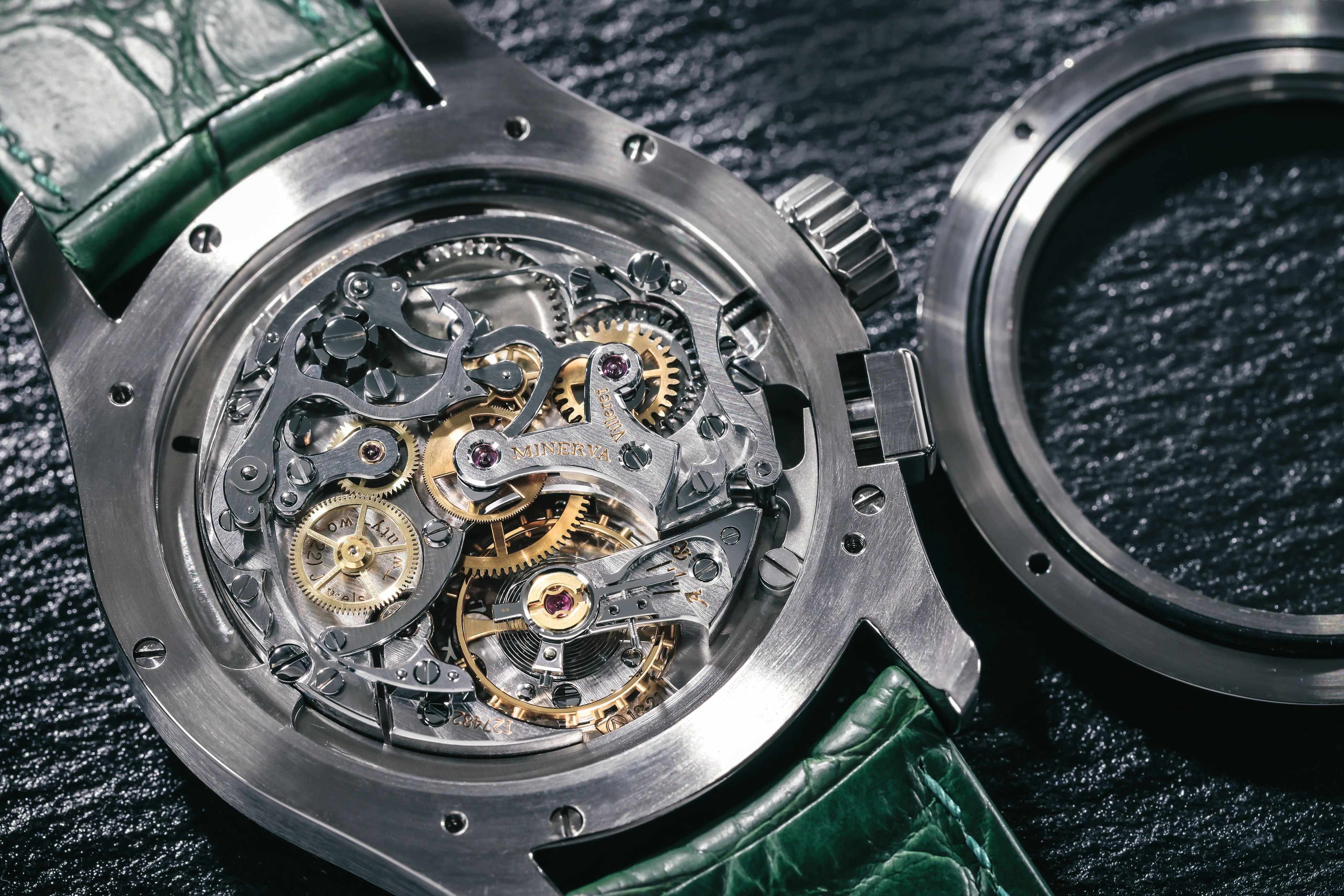
The Movement
The transparent caseback provides an excellent view of the classical column-wheel chronograph. The pusher moves the main operating lever whose pivoting pawl advances the column wheel by one position. Then the column wheel, whose 'columns' are twice as wide as the gaps in between, ensures that only one of the three levers is activated at any one time as it falls into a gap. Another is deactivated as it leaves the gap. The three levers therefore successfully engage the second counter, stop the counter, and reset it. When the column wheel is advanced by pressing the pusher, there are always two things happening at once: At the start, the reset lever is pushed away and the horizontal clutch creates a connection to the chronograph hand. To stop the action, the clutch opens and the stop lever stops the hand. For the reset, the stop lever is pushed away and the reset lever presses on the cam and returns the timing seconds and minutes back to their original position.
Disassembly
To give us a closer look at the movement, master watchmaker Florian Pikor, the assistant workshop manager at Wempe in Hamburg, Germany, removed the four screws on the back, then the caseback and the crown, took out the movement and removed the hands and the dial. This reveals the Villeret watchmakers’ careful perlage finish on the mainplate, which no one can see or appreciate outside of regular service, or during a test like this. It is wonderful to see that the practice of fine watchmaking still exists, and that here, at least, cost controllers are not putting on the brakes as in so many other sectors. This is what distinguishes true craftsmanship from premium industrial products. The old Minerva manufacture in Villeret produces movements at a rate of less than one per day.
The remaining components continue the high level of decoration. Steel components like levers and springs have a brushed finish with bevelled and polished edges. Bridges have Geneva stripes and wide bevelled and polished edges. The iconic V-shaped Minerva chronograph bridge is clearly handmade: its sharp angle cannot be machine-cut or polished. Screws and jewels are recessed, screw heads are polished flat, and the regulator and balance wheel spring are polished to a mirror finish.
Also Read | Montblanc: Birth of a new gold
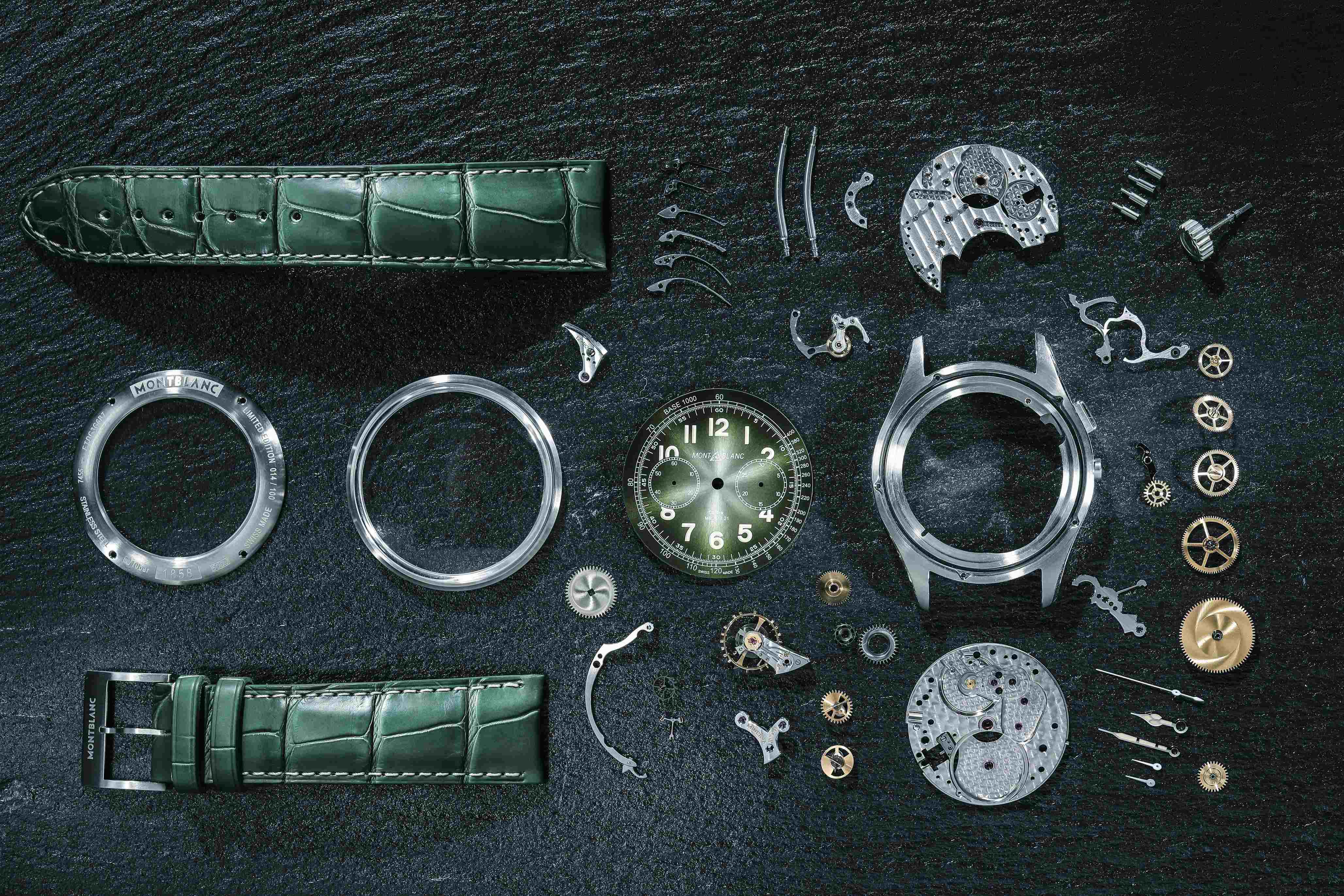
The fine regulating system with an adjustable pointer is one of the few modifications to the movement. The historical Calibre 13-20 had a simple regulator only. Another new design is the brake lever with an arrow-shaped tail — a nod to the old Minerva logo.
The large 11.4-mm screw balance wheel is also a beauty, oscillating at a frequency of 18,000 vph. This rate corresponds to the five divisions for each second on the dial. The overcoil of the hairspring is bent in a Phillips curve. The Villeret manufacture also produces hairsprings, something that very few watch manufacturers do. Highly specialised and precise equipment is needed for drawing the wire and rolling the hairsprings, which are then coiled and heat-treated so that they retain their shape. They are then trimmed to the proper length and attached to the collet. Despite meticulous production methods, the hairsprings are not identical, so they are classified and paired with the appropriate balance wheels. This ensures that the oscillation is precise and adjustable to only a few seconds per day. It is an extremely complicated and time-consuming process for a manufacturer like Minerva, which only produces about 300 watches each year.
Still, one cannot expect miracles from a hand-wound chronograph designed over 100 years ago. Prior to disassembly, the 18,000-vph watch showed acceptable rates on the timing machine, with an average gain of about 9 seconds per day and a maximum deviation of 14 seconds between the various positions. The drop in amplitude between the horizontal and vertical positions was not excessively high.
No Comparison
Accuracy is not a primary reason to purchase this hand-wound chronograph — it’s for the superb movement and cool retro design. And there really aren’t that many watches like it. A. Lange & Söhne and Patek Philippe have similar movements in their collections, but they are housed in elegant gold cases — resulting in prices that are about twice as high. This limited edition Montblanc chronograph of only 100 pieces is priced at Rs 22 lakh (approx.). At first glance, this may seem high for a steel watch, but it’s appropriate for such an exquisitely decorated classical chronograph movement and the superior craftsmanship of the hands, case and strap.
The heart of our test watch is its special chronograph movement with fine decorations executed by hand, even on hidden components, and the crisp yet supple pusher action. The 100-year-old movement makes this watch unique, and its attractive retro design and green colour give it an exceptional look without being over the top. In view of the superior quality and limited availability, the price is not too high.
Images: Marcus Kruger
This story first appeared in the January-March 2021 issue of WatchTime India. To subscribe to the magazine, click here.





